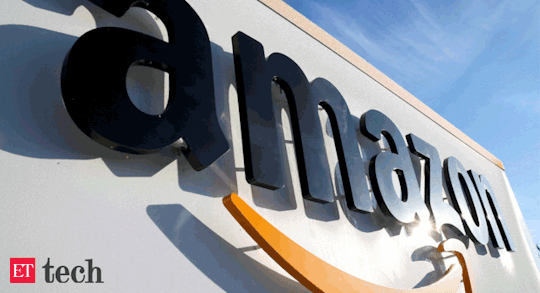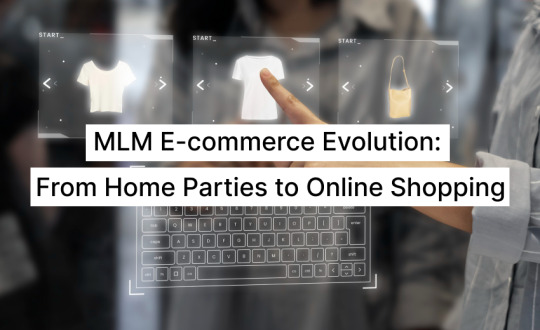#Ecommerce2023
Text
🚀 L'E-Commerce : Le Futur des Investissements 🚀
L’e-commerce a transformé notre manière de consommer et il ne cesse de croître. Selon le dernier article de Supeuro.com, les ventes mondiales de commerce électronique ont presque quintuplé en une décennie, atteignant plus de 3 900 milliards de dollars en 2020 ! 📈
Mais au-delà de ces chiffres époustouflants, l’e-commerce offre également d’énormes opportunités pour les investisseurs avisés, que ce soit par la création d’une boutique en ligne, l'investissement dans des plateformes déjà établies ou encore dans des technologies innovantes liées à ce secteur. 💼
Vous souhaitez en savoir plus sur les avantages, les défis et les meilleures stratégies d’investissement dans l’e-commerce? Plongez-vous dans l'article détaillé de Supeuro.com 🌐➡️ https://blog.supeuro.com/2023/09/investir-dans-le-commerce-opportunites.html

#ECommerceBoom#InvestissementFutur#TendancesECommerce#StratégiesInvestissement#CroissanceDigitale#OpportunitésECommerce#VentureOnline#SupeuroInsights#RévolutionNumérique#ECommerce2023#supeuro#investissement#blog supeuro#supeuro.com#investir
0 notes
Text

From cozy home gatherings to the vast world of online shopping, the MLM industry has evolved significantly. Explore the fascinating journey in our latest blog post, uncovering insights and strategies for success in the digital age of entrepreneurship. Don't miss out on this insightful read! 🛒💼💻
#mlm#mlm2023#ecommerce#mlmecommerce#mlmecommerce2023#mlmbusiness#mlmcompanies#ecommerce2023#evolution#ecommerceintegration
0 notes
Text
What are some good and elegant Magento themes for an e-commerce site?
Porto:
One of the top-selling Magento themes on ThemeForest. It's fully responsive, easy to customize, and suitable for any type of online store.
Ultimo:
A premium theme known for its flexibility and customizable design. It offers a fluid product grid and unlimited layout options.
Fastest:
As the name suggests, it's optimized for speed. It also provides a sleek design suitable for a variety of e-commerce niches.
Claue:
A minimalist theme that's focused on products. It comes with a variety of homepage layouts and is perfect for modern online stores.
MegaShop:
A fully responsive theme suitable for any e-commerce niche. It's bundled with premium features and offers multiple layouts.
Market:
A multipurpose theme offering integrated extensions, mobile optimization, and vertical mega menus.
Ves Fasony:
A theme tailored for fashion stores, it offers a clean, modern design with a focus on large images and easy navigation.
Ves Flashshop:
A multi-purpose theme known for its impressive visual content and advanced features suitable for any store type.
Sahara:
A versatile theme with a range of layouts suitable for fashion, digital, and even furniture stores.
Supro:
A minimal Magento 2 theme for fashion, optimized for performance and offering a range of pre-built layouts.
Fortis:
Fully responsive with unlimited color options. It's user-friendly and suitable for any product range.
Ves Evolution:
A theme suitable for tech and electronics stores, offering a modern and sleek design.
Athlete2:
Tailored for sports-related e-commerce sites, this theme offers a bold design and integrates with various extensions.
Ketty Magento 2:
A fashion-centered theme that's fully responsive and offers a sophisticated design.
Ves Pencil:
Ideal for fashion designers or furniture creators, this theme offers a minimalist, image-focused design.
When choosing a Magento theme, ensure that it aligns with the goals and aesthetics of your brand. Look out for themes that are regularly updated, compatible with the latest version of Magento, and are backed by strong customer support. Also, consider the ease of customization and integrated features that can save you time and money in the long run.
#MagentoThemes#EcommerceDesign#MagentoEcommerce#WebDesignTrends#ResponsiveDesign#Ecommerce2023#OnlineStoreDesign#MagentoTips#BestMagentoThemes#EcommerceSuccess#DigitalStorefront#MagentoCustomization#EcommerceEvolution#WebStoreAesthetics#UpgradeYourEstore#vinhjacker#mageplaza
0 notes
Text
Mastering E-Commerce Marketing: A Comprehensive Guide to Boost Your Online Store's Success

Having established the foundations of building an e-commerce store in our previous guide, we now delve into the next crucial step: effectively marketing your online shop. Mastering e-commerce marketing is critical in standing out from the competition and driving sales.
Understanding E-Commerce Marketing
E-commerce marketing involves promoting your online store and products to increase brand awareness, attract customers, and generate sales. It includes various digital marketing strategies, from SEO and content marketing to social media and email marketing.
Understanding e-commerce marketing begins with knowing your customer journey. This journey refers to the stages a customer goes through, from becoming aware of your brand to making a purchase and beyond. By understanding this journey, you can craft a marketing strategy that targets customers at each stage, increasing the likelihood of conversions.
SEO for E-Commerce
Search engine optimization (SEO) is a powerful tool in e-commerce marketing. Good SEO practices help your online store rank higher on search engine results pages (SERPs), increasing visibility and driving organic traffic.
To optimize your e-commerce site for SEO, focus on the following:
Keyword Research: Use tools like Google Keyword Planner or SEMRush to identify relevant keywords in your niche. Incorporate these keywords into your product descriptions, meta descriptions, alt text, and blog content.
Site Architecture: A well-structured site makes it easier for search engines to crawl your pages and for users to navigate your site. Each product should be no more than three clicks away from your homepage.
Mobile Optimization: More consumers are shopping on their smartphones, so a mobile-friendly site is crucial. Google also uses mobile-first indexing, meaning it primarily uses the mobile version of your site for indexing and ranking.
Page Speed: A slow-loading site can lead to higher bounce rates and negatively impact your SEO. Use tools like Google PageSpeed Insights to identify issues that may be slowing down your site.
Backlinks: Backlinks from reputable sites can boost your SEO by showing search engines that your site is trustworthy. Guest posting, influencer marketing, and creating high-quality, shareable content can help you earn backlinks.
Content Marketing for E-commerce
Content marketing involves creating and sharing relevant, valuable content to attract and engage your target audience. For e-commerce businesses, this can include blog posts, product guides, how-to videos, infographics, and user-generated content.
A blog can be a powerful content marketing tool. It can help you rank for more keywords, provide value to your audience, and position your brand as an expert in your niche.
User-generated content, such as customer reviews and photos, can also boost your marketing efforts. They provide social proof, build trust, and can improve conversion rates. Encourage user-generated content by hosting contests, featuring customer photos on your site, and asking for reviews.
Social Media Marketing for E-commerce
Social media is an indispensable tool for e-commerce marketing. It can help you build brand awareness, engage with your audience, and even sell directly through platforms like Instagram and Facebook.
To leverage social media marketing, first, identify where your target audience spends their time. If they're mostly on Instagram, focus your efforts there. If they're on LinkedIn, target that platform.
Next, create a content calendar to plan and schedule your posts. Use a mix of promotional, educational, and entertaining content to keep your audience engaged.
Finally, take advantage of social commerce features, such as shoppable posts and Facebook Shops. These features allow users to purchase directly from social media platforms, providing a seamless shopping experience that can boost conversion rates.
Email Marketing for E-commerce
Email marketing remains one of the most effective digital marketing strategies for e-commerce. It allows you to communicate directly with your audience, build customer relationships, and promote your products.
Here are some strategies to leverage email marketing:
Building an Email List: Offer a discount or free shipping in exchange for a visitor's email address. You can also use content upgrades, like a free eBook, to encourage sign-ups.
Segmenting Your List: Not all customers are the same. Segment your list based on factors like purchase history and browsing behavior to send more personalized and relevant emails.
Automated Email Campaigns: Set up automated campaigns like welcome series for new subscribers, cart abandonment reminders, and post-purchase follow-ups.
Testing and Optimization: Regularly test different elements of your emails, like subject lines and CTA buttons, to see what works best for your audience.
Pay-Per-Click Advertising for E-commerce
Pay-per-click (PPC) advertising is a model where you pay each time someone clicks on your ad. Platforms like Google Ads and Facebook Ads use PPC.
PPC can be highly effective for e-commerce businesses as it allows you to reach a large audience quickly and offers precise targeting options. You can target based on demographics, interests, behavior, and more.
To get the most out of your PPC campaigns, consider the following:
Keyword Research: Use relevant keywords to ensure your ads show up for the right search queries.
Ad Copy and Design: Create compelling ad copy and design that resonates with your target audience and encourages them to click.
Landing Page Optimization: Ensure your landing page is relevant to your ad and provides a seamless experience. It should also be optimized for conversions, with a clear CTA and minimal distractions.
Testing and Optimization: Regularly test different elements of your PPC campaigns to identify what works best and optimize accordingly.
Conclusion
E-commerce marketing can seem overwhelming, but by breaking it down into manageable parts, you can create an effective strategy that drives traffic and sales. Remember, the goal is not just to attract customers but to create loyal customers who keep coming back.
SEO, content marketing, social media marketing, email marketing, and PPC advertising are all crucial components of a successful e-commerce marketing strategy. By understanding and leveraging these strategies, you can propel your online store to new heights of success.
Marketing is a continuous learning process. Stay updated with the latest trends, always be testing and optimizing, and don't be afraid to try new strategies. With persistence and creativity, you can master e-commerce marketing and build a thriving online store.
Congratulations! You're now equipped with the knowledge to market your e-commerce business effectively. So go ahead and take the next step in your e-commerce journey. Happy marketing!
#ecommerce marketing#onlineshop#digital marketing#seo for ecommerce#content marketing#ContentMarketing#social media marketing#email marketing#ppc advertising#OnlineStoreSucess#ecommercegrowth#customer journey#keyword research#SiteArchitecture#mobileoptimization#pagespeed#backlinks#social commerce#email list building#Ecommerce2023
1 note
·
View note
Text
Tendencias eCommerce 2023
Tendencias eCommerce 2023
El comercio electrónico sigue liderando en el mundo de las compras por internet, es por ello que hoy hablaremos de las tendencias que vienen para el año que viene.
Además de algunas cosas que se debe tener en cuenta, respecto a la logística, si quieres abrir tu propia tienda online.
Quienes compran por internet quieren seguridad, diligencia y al mismo tiempo la asesoría…

View On WordPress
#ComprasEnLínea#Ecommerce#Ecommerce2023#GustavoMirabal#GustavoMirabalAsesorFinanciero#TendenciasEcommerce2023
0 notes